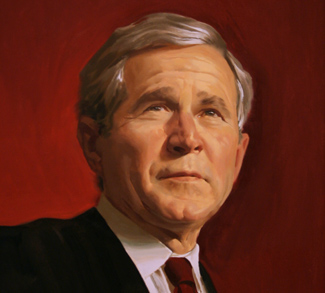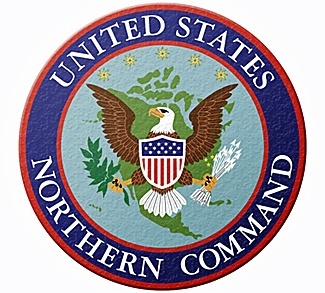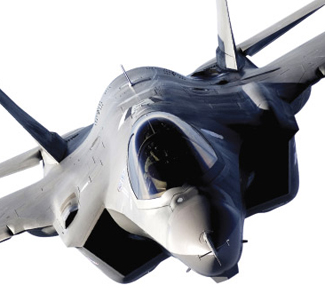The Soviet-China partnership at the beginning of Cold War, and the present quasi-alliance between China, Russia, Iran, and North Korea all have much in common. Their overriding goal is to topple the United States. This means that the U.S. cannot simply withdraw behind its oceans and adopt a posture of isolation or neutrality; the U.S. itself, and its power and wealth, is the target. Donald Trump, the market fundamentalists, and their supporters should understand that.
The mid-2020s are very similar not just to the 1930s (as everyone talks about), but also to the late 1940s and early 1950s, never mind that in the 50s only 24% of the world GDP was coming out of global trade; now that figure is about 60%. In those decades, a third world war almost broke out between the U.S. and the USSR/China. The Korean War happened, China invaded Korea as part of that war, and the USSR almost invaded Yugoslavia. Only strong deterrence by the U.S. and distrust between the USSR and China averted the danger. Now, it seems that we are in another critical period, and much depends on the choices of leaders in China and Russia.
Xi and Putin regard themselves as world-historical men of destiny. They believe they are capable of decisive, strategic action. Xi ranks himself with Mao and Stalin. Putin evokes the memory of Peter the Great. In China, Russia, and Iran, the information and decision environments are cloistered; moreover, in all three states, the propaganda entities have already been preparing their populations for a time of war, great sacrifice, and existential struggle. Nothing of the sort appears to be underway in the West. Suppose a Western politician in power tomorrow tries to do some preparatory talking and carry out just a few simple preventive measures. In that case, he/she will probably lose his/her power at the moment of attempting to explain why some pre-war austerity is necessary.
Besides, the U.S. no longer has the industrial strength to win a direct confrontation, as it did in former conflicts. On the other hand, China is preparing for war. For the last 10 years, China has been working hard on preparing and refining its plans for national defense mobilization. One lesson to its leaders from the Ukraine war is the shallow and fragile character of the U.S. defense-industrial base. Chinese manufacturing capacity now exceeds both the United States and Europe put together. There is little net public support in the United States for further big increases in defense spending beyond current levels. Yet despite an uptick in spending after Russia’s invasion of Ukraine, some experts such as Michael Brown note that “America has a smaller military with older and less equipment than at any time in memory.” Brown predicts that China will move on Taiwan with a blockade rather than an invasion, attempting to bring the island to its knees by simply asserting that it is a Chinese province and daring any outside powers to treat it otherwise. An invasion would be extremely difficult and risky and would generate huge losses for the world economy, with China itself being hard-hit. A blockade, in contrast, would dare Taiwan and its protectors to make escalatory moves, while at least offering the possibility of a cheap, bloodless conquest.
Why does this expectation seem plausible? In response to the election of a new Taiwanese president, China has surrounded Taiwan with warships, obviously conducting a dry run for an actual blockade. Then Russia made a number of aggressive moves towards NATO countries, signaling that it would not be satisfied with dominating only Ukraine.
Let us go through some of these developments.
China and Russia are making moves
Taiwan recently had an election. In Taiwanese politics, you have two main parties — the KMT, which favors a more conciliatory approach towards China with closer engagement, and the DPP, which favors distancing Taiwan from China. The KMT won the legislature, while the DPP — thanks in part to a third-party spoiler candidate — won the presidency.
In his inaugural speech, the new DPP president, Lai Ching-te, urged China to leave Taiwan alone and alluded to the island’s autonomy, while falling short of asserting Taiwan’s formal independence — a pretty standard DPP position. But whereas in the past, China reacted with annoyance and protests to such speeches, this time it surrounded Taiwan with warships.
This is obviously a rehearsal for a real blockade. Not only are they a rehearsal in the sense of being a training exercise, but repeated almost-blockades of this type might lull both Taiwan and the U.S. into being surprised when the real version comes.
Meanwhile, China is making various other moves that look an awful lot like military preparations. It is preparing a large armada of ferries to support a possible amphibious assault. It is stockpiling copper, iron, food, and energy. It is buying up gold and reducing its official holdings of U.S. government bonds, an obvious hedge against financial sanctions.
This is all unfolding as the government’s main TV station continues to beat the war drums pretty hard. China is issuing threats towards Japan, which is likely to get involved in a Taiwan conflict due to its own strategic vulnerabilities. China’s ambassador to Japan declared that “once the country of Japan is tied to the tanks plotting to split China, the Japanese people will be brought into the fire.”
US intelligence also believes that China is now working closely with the Russians on a Taiwan invasion scenario. In other words, if US intelligence is correct, an attack on Taiwan is likely to trigger a more general attack on democratic countries by the China-Russia axis. From this point of view, Russia is also doing some bloody rehearsal in Ukraine.
Therefore, Russia appears to be preparing for a more general confrontation with NATO in Europe. It recently removed the river buoys demarcating its border with Estonia. Estonia is the NATO country that is probably first in line to get invaded if Russia goes to war with NATO, given its small size and population, its exposed geographic position, and its large minority of Russian speakers whose existence could provide Russia with an excuse for an attack.
Meanwhile, Russia is stepping up what appears to be a sabotage campaign against Europe. Poland’s prime minister has declared that Russia was likely behind the burning of a shopping mall in Warsaw, and many suspect that it was also behind a fire at Novo Nordisk’s headquarters in Copenhagen. This is in addition to various other aggressive maneuvers. It is not clear what all this is supposed to accomplish — scaring Europe into disunity and inaction, perhaps — but it certainly seems to indicate an aggressive Russian posture toward NATO.
Putin can be so confident in this slow-building aggression because he knows his superpower ally has his back. Putin recently went to meet Xi in China, and the two promised to strengthen their “no limits partnership.” Xi even gave Putin a hug — a rare sign of personal affection from a Chinese leader.
And there is growing evidence that those words are being backed up with deeds. China is buying huge amounts of Russian oil, keeping the Russian economy afloat. It is selling the Russians huge amounts of dual-use technology to keep its military machine humming despite Western sanctions. And the UK now believes that China is providing or preparing to provide Russia with lethal aid — actual weaponry — for the Ukraine war.
Dreams of severing Russia from China by offering it Ukraine on a silver platter were always highly unrealistic, but now they are just utterly laughable. Nor will the threat of sanctions be sufficient to deter China from supporting its ally’s war effort forever.
What concretely can we expect from Cold War 2?
Firstly, increasing costs from trade fragmentation, i.e., further inflationary effects on the Western economies, affecting them mainly through the international supply chains and the increased defense expenditure. Cold War 2 will reduce their growth perspectives apart from the military sector. It will be a particularly severe issue for Europe.
There is also greater uncertainty about whom the bloc countries may choose to associate with. Within-country swings in the ideology of the political leadership have increased compared to the old Cold War era and make it difficult to pin down allegiances. This uncertainty can further raise costs.
On the other hand, the potentially non-aligned countries now have greater economic heft in terms of GDP, trade, and population. For the current period, this analysis considers two hypothetical blocs based on countries’ voting patterns in the UN and includes predominantly the United States and Europe in the Western bloc and China and Russia in the Eastern bloc, with the rest of the countries considered “non-aligned.” In 1950, the Western and Eastern blocs together accounted for roughly 85 percent of global GDP. The two blocs that we hypothetically have today account for roughly 70 percent of GDP and only one-third of the world’s population. They have to compete with non-aligned emerging players, too.
Given their increased economic integration—in 2022 more than half of global trade involved a non-aligned country—they can serve as “connectors” between rivals. They can benefit directly from trade and investment diversion in a fractured global economy and cushion the negative effect of fragmentation on trade, reducing costs. But all that will diminish the fruitful potential for applying the model of a global green economy and, eventually, intensive AI usage.
While the growth of trade has slowed everywhere after the war in Ukraine, growth between blocs that are not politically aligned has slowed more. Specifically, trade growth within blocs has decreased to 1.7 percent from 2.2 percent pre-war. Trade between blocs has declined from 3 percent pre-war to around -1.9 percent. On net, this generates 3.8 percentage points faster growth in trade within blocs as opposed to between blocs.
This evidence—along with correlations in the data—points to lengthening supply chains. The estimation is supported by a recent BIS study, which examined data from more than 25,000 companies and found that supply chains have lengthened in the last two years, especially those involving Chinese suppliers and US customers. Mexico and Vietnam have become key intermediary players.
In sum, fragmentation is already a reality as geopolitical alignments shape trade and investment flows, and the process will likely continue. But despite efforts by the two biggest economies to cut ties in Cold War 2, it is not yet clear how effective they will be in a deeply integrated and connected global economy.
The Economic Costs of Fragmentation
If fragmentation deepens, what would be the economic cost? And how will those costs be transmitted?
With trade being the main channel through which fragmentation could reshape the global economy, imposing restrictions on trade would diminish the efficiency gains from specialization, limit economies of scale due to smaller markets, and reduce competitive pressures.
The estimates of the economic costs of fragmentation vary widely and are highly uncertain. But recent and ongoing work at the IMF suggests that these costs could be large and weigh disproportionately on developing countries.
If the global economy were to fragment into two blocs based on UN voting on the 2022 Ukraine Resolution and trade between the two blocs were eliminated, global losses are estimated to be about 2.5 percent of GDP. But depending on economies’ ability to adjust, the losses could reach as high as 7 percent of GDP in certain cases. At the country level, losses are especially large for lower-income and emerging market economies.
The IMF simulations suggest that if only trade between a US-Europe bloc and a China-Russia bloc is disrupted, the remaining economies will see some gains, on average.
Latin American countries are well placed to benefit in such a scenario. For example, Mexico’s proximity with the United States could boost its manufacturing sector, while South America’s commodity exporters could gain market shares.
However, fragmentation would also inhibit efforts to address other global challenges that demand international cooperation. The breadth of those challenges—from climate change to AI—is immense.
Another recent IMF analysis shows that fragmentation of trade in minerals critical for the green transition—such as copper, nickel, cobalt, and lithium—would make the energy transition more costly. Because these minerals are geographically concentrated and not easily substituted, disrupting their trade would lead to sharp swings in their prices, suppressing investment in renewables and EV production.
Consequently, the Eastern alliance has the strategic initiative — China and Russia are making all the moves (they call what they want ‘a new and more just international order’), while the U.S. and its allies are scrambling to respond. Yet respond they must, even being burdened with lower industrialization levels, smaller resourcefulness in manpower and raw materials, and higher state debts.
A Plan of Action for U.S. and Its Allies
Cold wars are characterized by early pivot points or crises that can easily mushroom into all-out war. Only by shoring up deterrence and defining boundary lines can a cold war go truly cold — it is a sprint of a few years, followed by a marathon of a few decades.
One thing the U.S. can do is to prioritize Asia over either Europe or the Middle East. China is the world’s manufacturing powerhouse and could defeat all the other countries in Asia on its own; Russia is a mid-sized power that could not hope to match the combined efforts of the European countries if they were to lend their full industrial strength to Ukraine, which they are far from doing at present. And the Middle East is simply strategically unimportant. It should be cut off from Washington’s immediate calculations.
Europe has to step up and take the lead role in its own defense although it will be gruesome for its short-term economic growth perspectives and needs an austerity mentality. Europe needs also to understand that stepping up means austerity primarily and then unified foreign policy. But to be honest, one cannot see austerity and common foreign policy happening any time soon, together with liberal democracy being preserved in many European countries. Of course, it raises the fundamental question of how resilient European democracy actually is. Apart from this, the democracy vulnerability in Europe underscores that global democracy could keep some vitality only with essential US backing. But if half of the US citizenry is behind Trump’s isolationism, the global outlook appears bleak.
The United States should not abandon Ukraine’s aid. To do so would be tantamount to delivering Eastern Europe into Putin’s hands.
The Ukraine war is an important source of demand that will allow US defense producers to invest and ramp up production. And the best ramping up would come with US investments in military production not in America, but in Eastern Europe or Scandinavia. Remember that factories built to provide weapons to Ukraine can easily be repurposed to provide weapons to Taiwan in case war breaks out there. The most reliable key for keeping liberal democracy vivid in the world is perhaps the one related to immediate US military production investments in northeastern parts of Europe. This will not cost the United States in terms of austerity, and it will soften the defense expenditure of Europe.
In this respect, the blocked Russian Central Bank assets in the West (the main volumes of them are in Europe) might represent a unique leverage tool. Besides, this would strengthen the internal consolidation of NATO member countries if they work out a joint scheme for financing (including through securitized debt undertaking based on Russian assets collateral) and marketing of the newly manufactured weapons. Ukraine will also be tied firmly to NATO thus, even in the case of a long-term freeze of its conflict with Russia. Its defense flexibility is going to be improved sustainably under these circumstances, too.
But no matter what happens, the U.S. is going to have to spend more on defense. This is going to be a difficult, bitter realization for many progressives who have spent their entire lives believing that America vastly outspends its rivals on defense and that the U.S. should therefore cut defense spending to boost welfare spending. But a proper accounting (with parity adjusted cost figures) shows that the U.S. no longer outspends its rivals by a substantial amount. Defense has shriveled as a percent of US government spending, decade after decade, while the situation in China is just the opposite. The progressive conventional wisdom of the 1990s no longer holds.
The U.S., and the free world in general, now find themselves in an extraordinarily dangerous moment in world history. A New Axis is on the march, and in many ways, it is stronger than any of the autocratic coalitions that America faced in the 20th century. Meanwhile, the U.S. remains burdened by institutional weakness and riven by internal social conflict. If there is to be a reversal, the United States must take Cold War 2 much more seriously than it is currently doing.
The views expressed in this article belong to the author(s) alone and do not necessarily reflect those of Geopoliticalmonitor.com.




